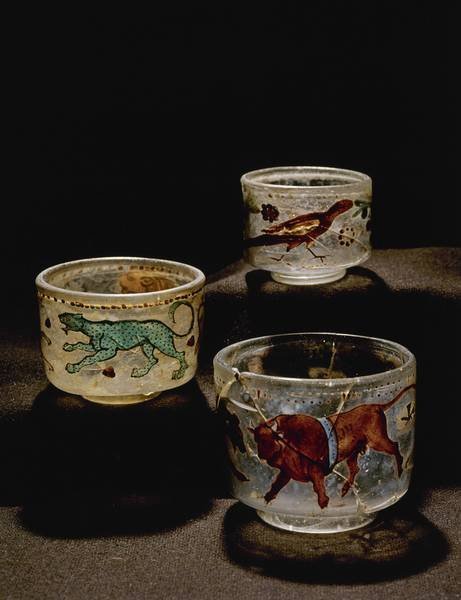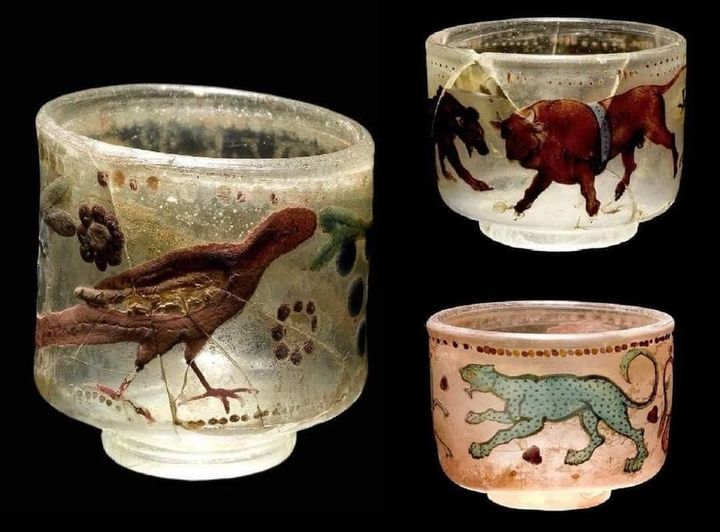In the quiet, verdant landscapes of Denmark, a remarkable discovery has drawn the attention of historians and archaeologists alike. Buried in princely graves dating back to the 3rd century AD, these Roman glass cups, known as “Circus Cups,” offer a fascinating glimpse into the interplay of cultures and the spread of Roman artistry far beyond the empire’s borders.
The Intriguing Origins of Circus Cups

The so-called “Circus Cups” earned their name due to their intricate enamel-decorated images depicting animals from Roman arenas. These cups were more than mere drinking vessels; they were canvases that brought to life the excitement and grandeur of the Roman circus, where exotic animals and gladiators provided entertainment for the masses. Crafted with remarkable skill, these cups were imported from workshops in the Rhine area, a region renowned for its high-quality glass production and artistic excellence.
Cultural Exchange and the Spread of Roman Artistry

The presence of these Circus Cups in Denmark’s princely graves is a testament to the extensive trade networks and cultural exchanges of the time. During the second half of the 1st century AD, these attractively decorated vessels were fairly common and found throughout the western provinces of the Roman Empire, including Britain. Their discovery in Denmark highlights the reach of Roman influence and the fascination that Roman art and culture held for the elite of distant lands.
Artistry and Craftsmanship

The Circus Cups are distinguished by their vivid enamel decorations, which often featured scenes of wild animals such as lions, bears, and deer, as well as gladiatorial combat. The use of vibrant colors and dynamic compositions speaks to the high level of craftsmanship in the Rhine workshops. These cups were not only functional items but also status symbols that conveyed the wealth and sophistication of their owners.
Significance of the Finds in Denmark
The excavation of Circus Cups in Danish princely graves adds a significant chapter to our understanding of early European history. These artifacts illustrate the complex web of interactions between the Roman Empire and the Germanic tribes of Northern Europe. The exchange of goods, ideas, and artistic styles underscores a period of cultural fusion and the spread of Roman aesthetic values far beyond the empire’s political boundaries.

Preserving and Celebrating Heritage
Today, the Circus Cups serve as precious historical relics that offer insight into the past. They remind us of the far-reaching influence of the Roman Empire and the interconnectedness of ancient societies. Museums and archaeological institutions continue to study and preserve these artifacts, ensuring that future generations can appreciate the artistry and historical significance of these remarkable glass cups.
In conclusion, the discovery of Roman Circus Cups in Denmark’s princely graves sheds light on the rich tapestry of cultural exchange in ancient Europe. These beautifully crafted vessels stand as enduring symbols of a time when the allure of the Roman circus captivated the imagination of people far and wide, leaving an indelible mark on the history and art of the Western world.
